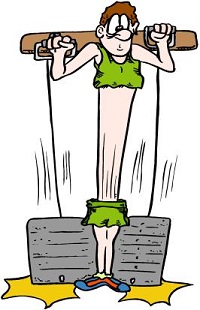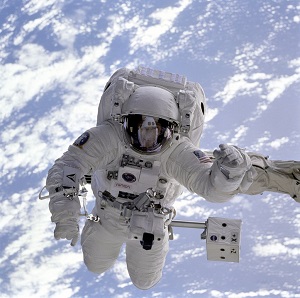When we press on the table with our hand, we exert a certain pressure with the palm of our hand.
The pressure is the physical scale which characterizes the amount of applied force on a surface area of contact.
The letter symbol for pressure is “p”.

- The greater the applied force, the greater the pressure.
- The larger the area, the less the pressure.
Conversely the pressure will be greater the smaller the area of applied force. Hence, we can easily stab the point of a needle into the surface of a table.
In our profession the most common pressures are due to weight (weight is a force)

To reduce the pressure due to the weight of machines, we sometimes install them on large blocks, which due to their large surface area reduce the pressure on the supporting floor.

In everyday language we confuse weight with mass. It is normal to say “the weight of the object is, for example, 50 [kg]”. In reality this is its mass (weight being expressed in Newtons and not in [kg]).
- Mass is in proportion to the amount of molecules which make up a given body. This never varies whatever the position of this body in the universe.
- Weight corresponds to the force with which a mass is attracted to the earth. It depends on terrestrial attraction.

The international unit to calculate force is the Newton.
The Newton is approx. the weight of a mass of around 100 [g] (US: 3.527 oz).
The international unit of pressure is the Pascal.
It corresponds to the applied force of 1 Newton on an area of 1 [m²] (US:
10.763 sq.ft).
The Pascal corresponds to the pressure due to a mass of 100 [g] (US: 3.527 oz)
distributed over 1 [m²] (US: 10.763 sq.ft).
This is a very low pressure. The Pascal is not suitable for our profession.
Therefore we use:
[kPa]= 1000 [Pa] (US: 0.15 psi) and the [bar] = 100 000 [Pa] (US: 14.5 psi).
